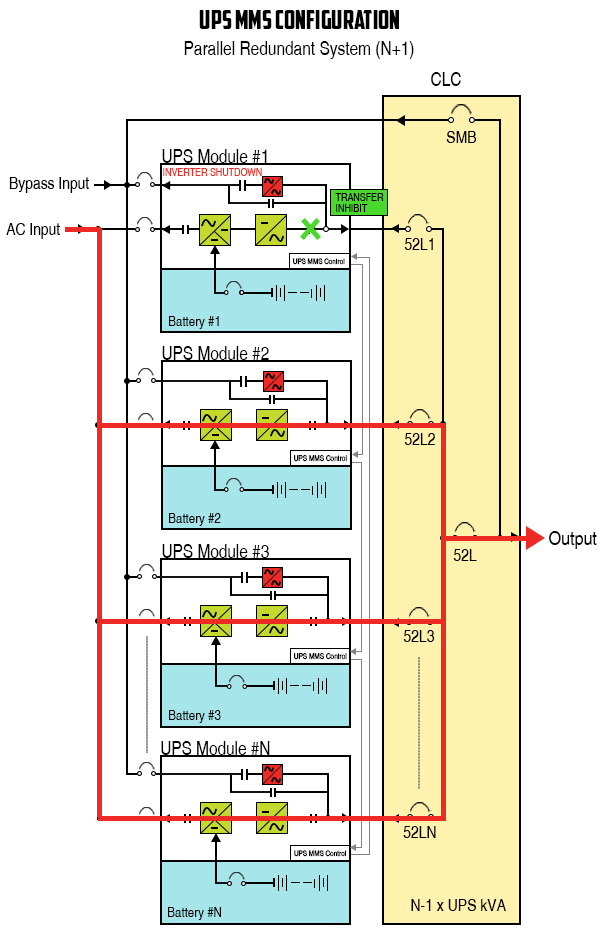Parallel UPS Solutions
Parallel UPS Solutions
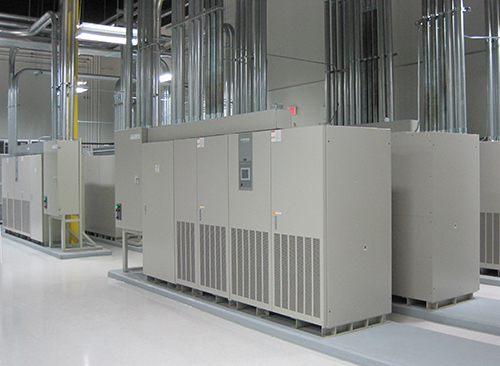
Parallel UPS Modules
Paralleled UPS modules are required in two instances:
- When the power demands of the site exceed the capacity of a single UPS module
- The site would like to have a redundant UPS module in case of unit failure
How UPS manufacturers parallel units together can be different.
Mitsubishi Electric's approach is to have all of the UPS modules in the parallel system tied together on a parallel bus and isolatable via output isolation breakers. All of the control of the parallel system is contained inside the UPS modules. This leaves the paralleling cabinet, also known as the Critical Load Cabinet (CLC), to only contain breakers and interlock controls. An optional HMI can be installed in the gear, providing a quick status of the overall system including the UPS modules.
Internal Static Switch
All Mitsubishi Electric UPS modules are designed with an internal Static Transfer Switch (STS). The internal STS provides a power path through the UPS in the event of a fault in the UPS module.
With this design, the UPS module can be used in a Single Module System (SMS) application or a Multi-Module Systems (MMS) application without changing the internal components. This provides flexibility to the end user to change critical infrastructure as their site needs change over time without purchasing a new UPS.
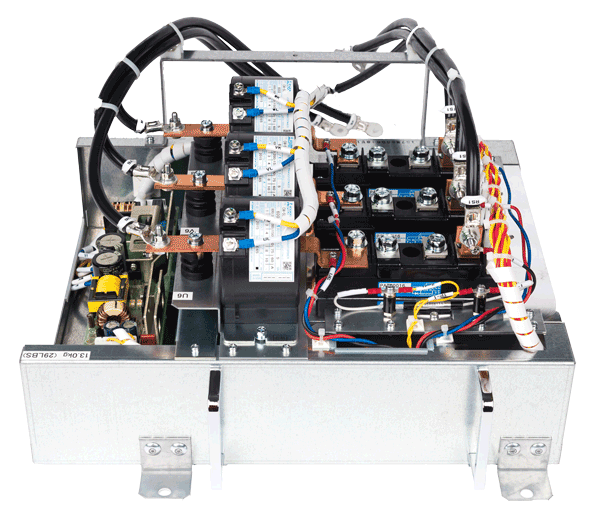
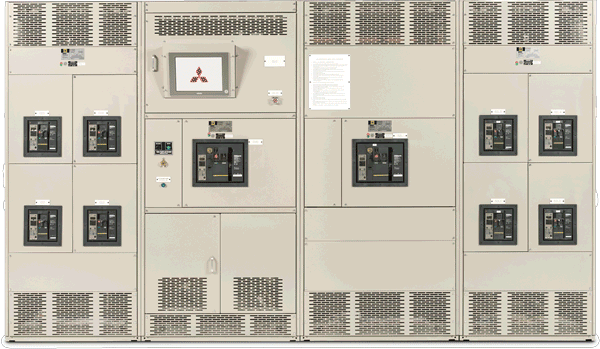
Critical Load Cabinets
Mitsubishi Electric offers a full range of standard and custom critical load cabinets. If you have space constraints or stringent requirements, we can custom design a critical load cabinet to meet your needs and exceed your expectations.
We are breaker manufacturer neutral, offering solutions in all major brands. Our CLC capacities range from as small as a redundant 2x80kVA up to 4x2100kVA.
Simplified Design
When using an internal STS UPS module in a MMS application, a centralized static switch is no longer required in the paralleling gear. This is called a distributed redundant STS MMS system, which greatly simplifies the design of the CLC by removing the STS and controller from the CLC.
The removal of these components removes potential points of failure from the CLC. Without the requirement for the STS controller, the UPS modules provide all MMS control. By using a redundant control scheme inside the UPS modules, any module failure or communication failure in the MMS system will not cause the system to fail. Redundant communication paths between each UPS module can also reduce the risk of a communication failure.
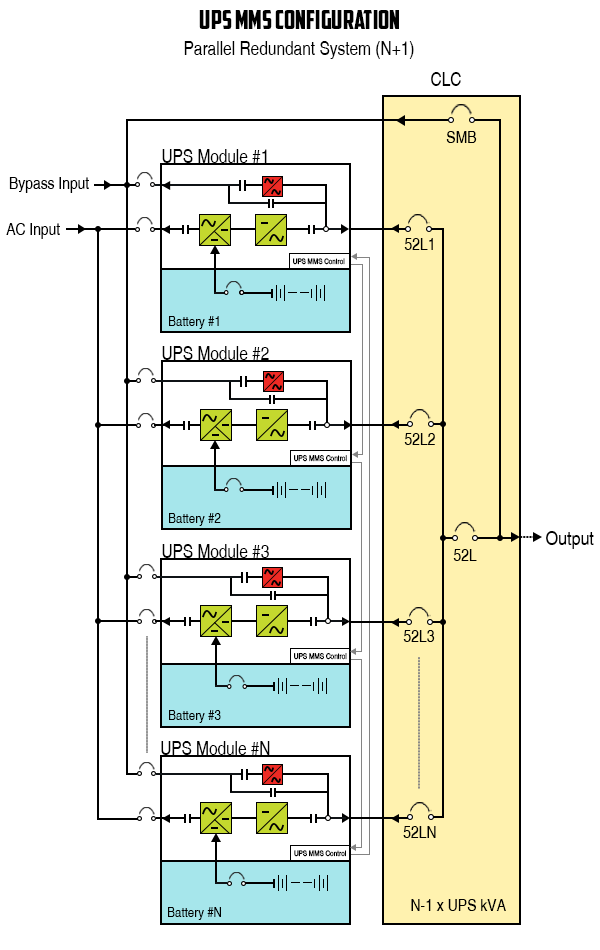
Distributed Redundant UPS
In the event of a failure in the MMS system, any UPS module can isolate itself from the critical bus by its output contactor. This allows the other UPS modules to maintain the critical load until maintenance can be performed on the failed UPS module.
If the load on the remaining UPS modules exceeds their ability to maintain operation, then all UPS modules will simultaneously transfer from inverter operation to their bypass paths. Since the bypass paths are available, the UPS modules can easily support the critical load until the system can be maintained and brought back online.
